Opioid Driving Safety Calculator
Opioid Driving Safety Calculator
Calculate your safe waiting time before driving after taking opioids. Opioids can impair driving even at therapeutic doses. This calculator uses medical guidelines to show when you might be safe to drive.
Driving while taking opioids isn’t just risky-it’s illegal in many places, even if the medication was prescribed by a doctor. You might think that if you’re taking your pills exactly as directed, you’re safe behind the wheel. But the truth is, opioids can slow your reaction time, blur your vision, and make you drowsy-even at therapeutic doses. And if you get pulled over, it doesn’t matter if you have a prescription. In many states and provinces, opioid impairment is treated the same as drunk driving.
How Opioids Affect Your Ability to Drive
Opioids, whether they’re oxycodone, hydrocodone, fentanyl, or morphine, work by binding to receptors in your brain and spinal cord. That’s how they reduce pain. But they also affect areas of your brain responsible for attention, coordination, and decision-making. The National Institute on Drug Abuse confirms that opioids can cause drowsiness, dizziness, and impaired thinking-all of which are dangerous when you’re operating a vehicle.Studies show that driving under the influence of opioids can double your risk of a crash. That’s not a small increase. It’s the same risk level as driving with a blood alcohol concentration of 0.05%, which is above the legal limit in many countries, including Australia and Canada. Even if you feel fine, your brain isn’t working the way it should. You might not notice it, but your ability to judge distances, respond to sudden stops, or adjust to changing traffic conditions is reduced.
Unlike alcohol, where a breathalyzer gives a clear number, there’s no universal test for opioid impairment. That’s why police rely on field sobriety tests and evaluations by trained Drug Recognition Experts. Signs they look for include slow reaction time, poor balance, slurred speech, pinpoint pupils, and excessive drowsiness. Sometimes, the symptoms are subtle-especially if you’ve been taking the medication for a while. But that doesn’t mean you’re not impaired.
Legal Consequences Are Real-Even With a Prescription
Many people assume that because their doctor prescribed the medication, they’re protected from legal trouble. That’s a dangerous myth. In the United States, 16 states have zero-tolerance laws for opioids and other drugs. That means if any amount of the drug is found in your system while driving, you can be charged-even if you took it exactly as directed.Five other states have per se laws, meaning if your blood or urine shows a certain level of an opioid, you’re automatically considered impaired. Canada treats opioid-impaired driving the same as alcohol impairment under its Criminal Code. Penalties include license suspension, fines, mandatory education programs, and even jail time.
In Australia, driving under the influence of any illicit drug or prescription medication that impairs you is illegal under state and federal laws. Police can use oral fluid tests at roadside checkpoints to detect opioids like morphine, codeine, or fentanyl. If you test positive, you can lose your license immediately and face criminal charges.
There are rare exceptions. Some U.S. states like Utah and Wisconsin allow drivers to defend themselves if they can prove they were using the medication as prescribed. But even then, you still have to prove you weren’t impaired at the time of driving. That’s hard to do without a blood test showing you were within a safe range-and no such standard exists for most opioids.
What the Data Says About Opioid-Related Crashes
The numbers don’t lie. In California, 42% of drivers killed in crashes between 2018 and 2022 tested positive for drugs-including opioids. That number has been rising every year. The DEA reports a 262% increase in fentanyl-related impaired driving cases between 2020 and 2023. Fentanyl is 50 to 100 times more potent than morphine. Even a tiny amount can cause extreme drowsiness or sudden loss of consciousness.It’s not just illegal opioids causing problems. Prescription painkillers are just as dangerous on the road. A 2022 survey by the Pain News Network found that 63% of chronic pain patients didn’t know they could be charged with a DUI for driving on their prescribed opioids. And 28% admitted they’d driven within an hour of taking their dose.
One Reddit user, u/PainPatient88, shared: “My doctor said it was fine to drive on 5mg oxycodone twice daily. I failed a field sobriety test after my prescription was filled. I lost my license for six months.” Another user, u/RecoveryJourney, said: “I got a DUI on my pain meds-even though I was taking exactly as prescribed. Cost me $12,000.”
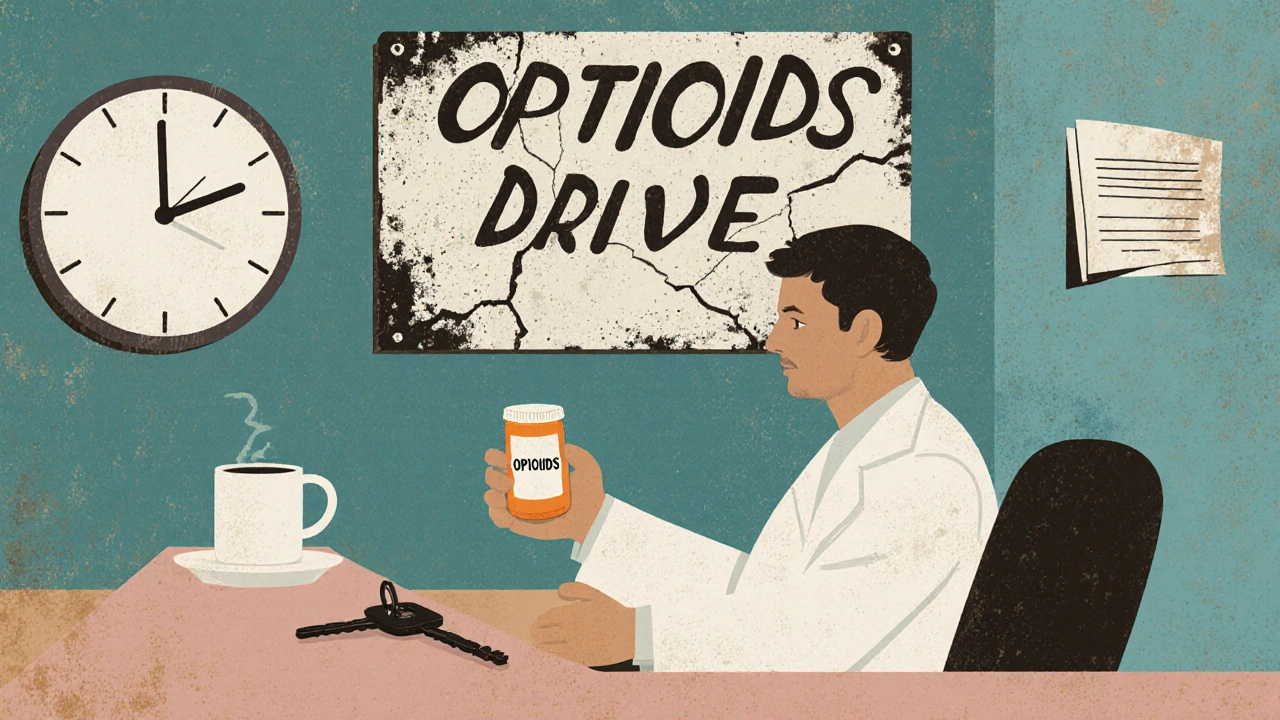
How Long Should You Wait After Taking Opioids to Drive?
There’s no one-size-fits-all answer, but timing matters. Immediate-release opioids like hydrocodone or oxycodone usually peak in your system within 1-2 hours. The Mayo Clinic recommends waiting at least 3-4 hours before driving. For extended-release versions like OxyContin or MS Contin, the drug stays in your system longer. Experts suggest waiting 6-8 hours, or even longer if you’re new to the medication.But here’s the catch: tolerance doesn’t equal safety. Someone who’s been on opioids for months might feel “normal,” but their brain is still slower than it was before they started taking the drug. That’s why even long-term users can be impaired.
The safest rule? Don’t drive after taking opioids unless you’ve tested it in a safe environment first. Try taking your dose at home, then wait several hours and see how you feel. Can you focus on a conversation? Do your eyes feel heavy? Can you walk a straight line? If anything feels off, don’t get behind the wheel.
What Your Doctor Might Not Tell You
A 2022 study by the National Safety Council found that 72% of patients prescribed opioids received little to no counseling about driving risks. Doctors are focused on pain management, not traffic safety. Pharmacists might give you a warning label, but they often don’t explain how serious it is.Always ask your doctor these questions:
- Will this medication make me drowsy or slow my reactions?
- Is it safe to drive while taking this?
- How long should I wait after taking it before driving?
- Are there non-opioid alternatives for my pain?
If your doctor says it’s fine to drive, ask them to put it in writing. That won’t protect you from a DUI charge, but it might help in court. And if you’re unsure, assume the worst: it’s not safe.
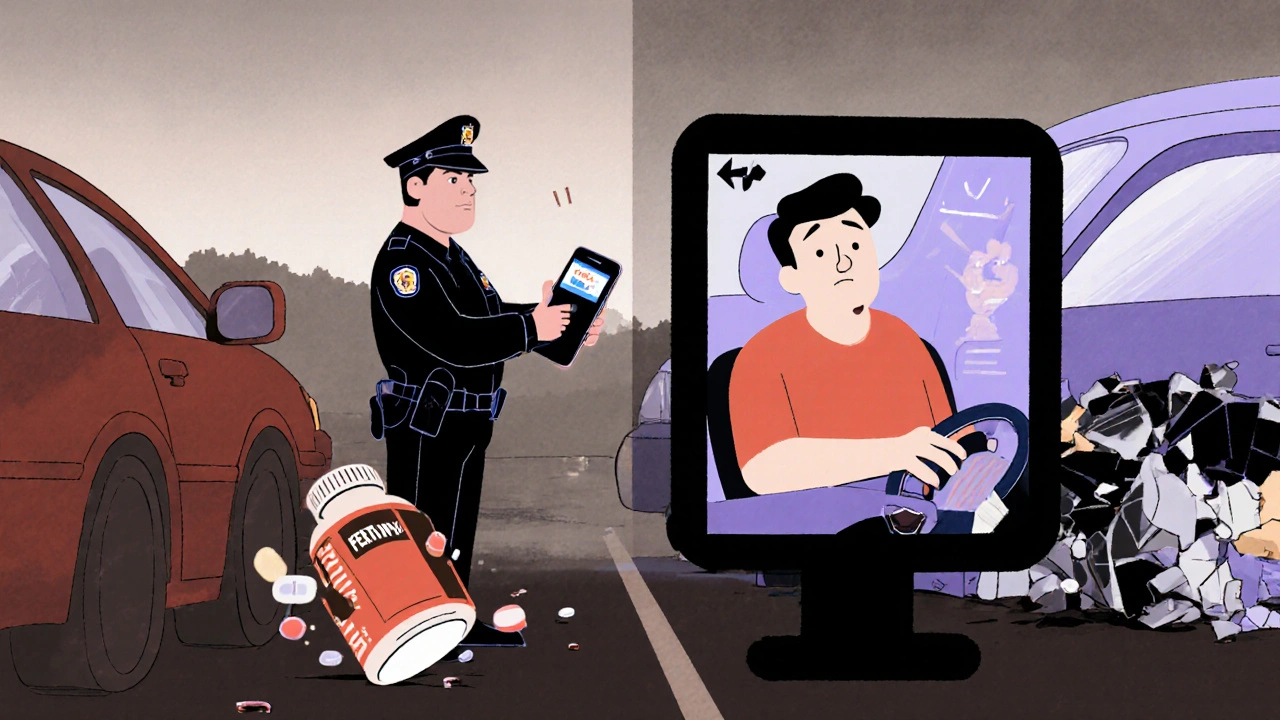
What to Do If You Need to Drive
If you rely on your car for work, appointments, or family needs, here are practical steps:- Plan ahead. Arrange for a sober driver, public transport, or rideshare when you know you’ll be on opioids.
- Use your medication at night, so you’re not driving the next morning.
- Ask your doctor about switching to non-opioid pain relief like gabapentin, acetaminophen, or physical therapy.
- Never mix opioids with alcohol, benzodiazepines, or sleep aids. That combination can be deadly and massively increases impairment.
- Always wear your seatbelt. Even if you’re sober, other drivers might not be.
Some companies are taking action. UPS now requires employees prescribed opioids to undergo a medical review before returning to driving duties. Since 2021, medication-related incidents dropped by 37%. That’s proof that policies work.
Technology Is Catching Up
Law enforcement is getting better at detecting opioid impairment. In 2023, the FDA approved the Dräger DrugTest 5000, a handheld device that can detect fentanyl and other synthetic opioids in oral fluid within minutes. Forty-seven U.S. states now use these devices at checkpoints, up from just 32 in 2020.The National Highway Traffic Safety Administration is training 5,000 new Drug Recognition Experts by 2025. That means more officers will be able to spot signs of opioid impairment-even if you don’t seem obviously drunk.
But the real problem? There’s still no reliable blood level that equals impairment for opioids. Unlike alcohol, where 0.08% is the legal limit, opioids affect people differently. Two people can take the same dose and have completely different reactions. That’s why enforcement is so inconsistent-and why so many people get caught off guard.
What’s Next?
More states are moving toward per se laws for opioids. In March 2024, seven additional U.S. states were considering such laws. The Transportation Research Board is pushing for scientifically validated limits within five years. Until then, the safest choice is simple: don’t drive on opioids.The opioid crisis isn’t just about overdoses. It’s on our roads, too. Every time someone gets behind the wheel while impaired by pain meds, they’re putting themselves-and everyone else-at risk. The law doesn’t care if you meant well. The crash doesn’t care if you had a prescription. Your life, and the lives of others, depend on making the right choice.
Can I drive if I’m taking opioids as prescribed by my doctor?
No-not safely, and often not legally. Even if your doctor prescribed the medication, opioids can impair your ability to drive. Many states and countries have zero-tolerance laws for opioids in your system while driving, regardless of whether you have a prescription. You can still be charged with impaired driving, lose your license, or face criminal penalties.
How long after taking opioids is it safe to drive?
There’s no guaranteed safe time, but experts recommend waiting at least 3-4 hours after taking immediate-release opioids like oxycodone or hydrocodone, and 6-8 hours after extended-release versions like OxyContin. However, everyone reacts differently. The safest approach is to avoid driving entirely until you know how the medication affects you personally. Never assume you’re fine just because you’ve been taking it for a while.
Can I get a DUI for prescription painkillers?
Yes. In Australia, the U.S., Canada, and many other countries, you can be charged with a DUI for driving under the influence of any drug that impairs you-even if it was legally prescribed. Police use oral fluid tests, field sobriety tests, and expert evaluations to determine impairment. Having a prescription doesn’t protect you from charges.
Do opioid warning labels on medication really matter?
Yes. Since 2020, the FDA has required all opioid medications to include clear “Do Not Drive” warnings on their labeling. These aren’t just suggestions-they’re legal requirements based on scientific evidence. Ignoring them puts you at risk of impairment, crashes, and legal consequences. If your pharmacist didn’t explain the warning, ask for a consultation. Your safety depends on it.
Are there alternatives to opioids for pain that won’t affect my driving?
Yes. Non-opioid options include acetaminophen, NSAIDs like ibuprofen, gabapentin for nerve pain, physical therapy, acupuncture, and cognitive behavioral therapy. Some patients find relief with topical treatments like lidocaine patches or capsaicin cream. Talk to your doctor about these alternatives. You don’t have to choose between pain relief and safe driving.
What should I do if I’ve been charged with driving on opioids?
Seek legal advice immediately. In some cases, having a valid prescription and proof of proper use can help your defense, but it won’t automatically dismiss the charge. You may also benefit from contacting support services like SAMHSA’s national helpline (1-800-662-4357), which offers guidance on medication safety and legal resources. Don’t try to handle this alone-understanding your rights is critical.
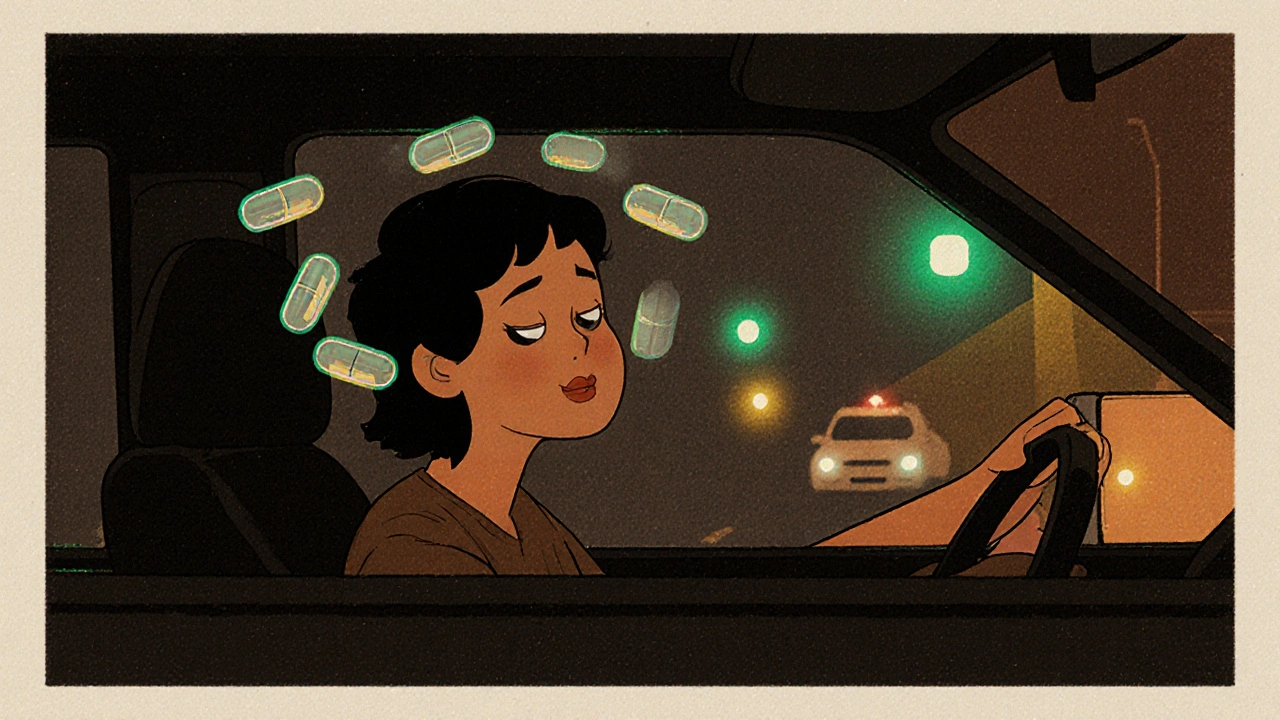
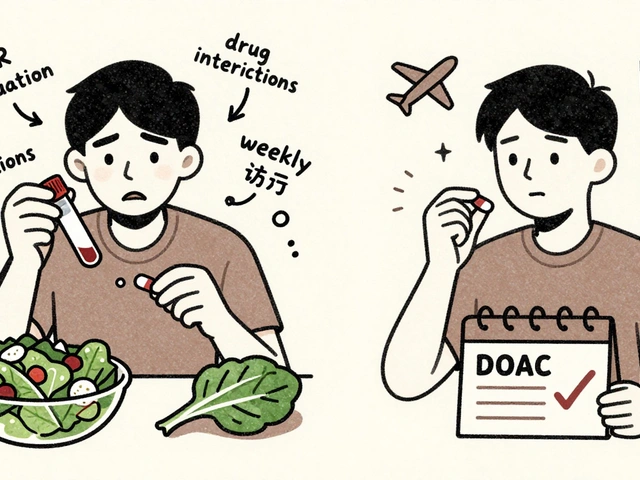
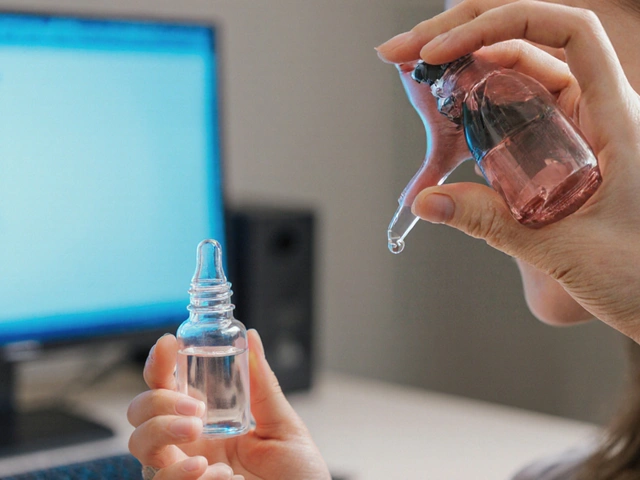

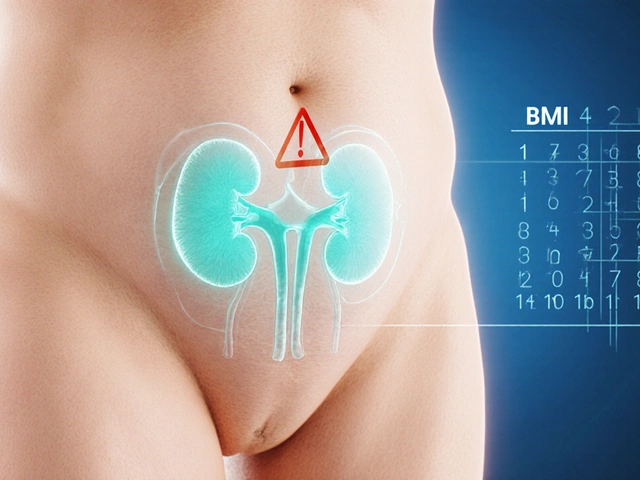

Nick Zararis
October 30, 2025 AT 10:49Just want to say: if you're on opioids and you're even *thinking* about driving, pause. Seriously. Stop. Breathe. Ask yourself: 'Do I feel 100%?'. If the answer is 'I think so'-that's not good enough. I've seen people crash because they 'felt fine.' You don't feel fine. Your brain is just lying to you. Wait. Call a ride. Sleep it off. Your family needs you home.
Rhonda Gentz
October 30, 2025 AT 22:34It's strange how we treat pain as a moral issue. We're told to 'push through'-but then punished for doing what the system told us to do. The real tragedy isn't the DUI-it's that the system offers no safe path. You're either in pain or in prison. No middle ground. No compassion. Just laws written by people who've never had a spine that screamed at 3 a.m.
Alexa Ara
November 1, 2025 AT 05:50I’m so glad this post exists. I’ve been on oxycodone for 4 years after my accident, and I never realized how dangerous driving was-even on a 'low dose.' I started using Uber for every trip after my last refill. My kids don’t know I used to drive to school with them in the back. Now? I wait until after dinner, take my meds, and nap. No more risk. You’re worth more than a 10-minute drive.
Olan Kinsella
November 2, 2025 AT 15:47They say 'don't drive on opioids' like it's a personal failure. But let’s be real-this is capitalism’s dirty little secret. Pharma sold us painkillers like candy, then turned around and criminalized the very people who took their advice. We’re not addicts. We’re victims of a system that profits off our suffering and then locks us up for trying to live. Wake up. This isn’t about safety. It’s about control.
Kat Sal
November 2, 2025 AT 18:37YES. I’m a physical therapist and I see this every week. Patients say, 'My doctor said it was fine.' But no one tells you how it *feels* to drive after 10mg of hydrocodone. You’re not drunk-you’re just... slow. Like your thoughts are underwater. I tell my clients: if you can’t text without lag, don’t drive. Period. And if you need help finding alternatives? I’ve got a list. DM me.
Rebecca Breslin
November 3, 2025 AT 12:56Canada’s laws are actually the most rational. We don’t have zero-tolerance-we have impairment. If you’re not safe to drive, you’re not safe. No matter the drug. And yes, we test for opioids at checkpoints. I’ve seen people cry because they thought their prescription was a shield. It’s not. It’s a receipt. The law doesn’t care about your receipt.
Kierstead January
November 3, 2025 AT 13:44Let’s cut the sugarcoating. If you’re taking opioids and driving, you’re a danger. You’re not a victim. You’re irresponsible. Your pain doesn’t give you a free pass to endanger others. I’ve lost friends to people who said 'I was just on my meds.' No. You were on a death sentence with wheels. Stop pretending you’re entitled to drive while chemically altered. Get a bus. Or stop whining.
Imogen Levermore
November 4, 2025 AT 01:32Wait… so the FDA says 'don't drive' but the DEA is installing drug scanners at every highway exit? 🤔 Conspiracy? Or just the government making sure you can’t escape their control? I mean… why not just implant chips? At least then we’d know who’s 'impaired'… 😏 #BigPharma #NewWorldOrder 🚗💊
Chris Dockter
November 5, 2025 AT 04:27Gordon Oluoch
November 5, 2025 AT 11:29There is no moral high ground here. You are not a hero for driving on painkillers. You are not a victim of the system. You are a liability. The fact that you think your prescription grants you immunity reveals a profound lack of accountability. Your suffering does not excuse endangering others. The law is not cruel-it is necessary. Stop romanticizing your poor choices.
Tyler Wolfe
November 5, 2025 AT 19:36I’ve been on long-term opioids since my surgery. I never drive after taking them. I take them at night. I use rideshares. I don’t feel guilty. I feel smart. I’ve got two kids and a dog. I’m not risking them because I’m too tired to wait an hour. You’re not weak for choosing safety. You’re wise.
Neil Mason
November 7, 2025 AT 15:31In Canada we say 'if you're not sure, don't drive.' Simple. No drama. My uncle took morphine after knee surgery and drove to the pharmacy. Got pulled over. They tested him. He lost his license. He didn't cry. He just got a bike. Said it was better for his back anyway. Sometimes the system works if you just listen.
Andrea Gracis
November 9, 2025 AT 05:22Matthew Wilson Thorne
November 10, 2025 AT 09:01It’s not that opioids impair you-it’s that your brain has been conditioned to normalize impairment. The real issue isn’t the drug. It’s the cultural delusion that function equals safety. You’re not driving because you’re capable. You’re driving because you’re afraid of being seen as broken.
April Liu
November 11, 2025 AT 23:59Hey Andrea-don’t panic. First, call your doctor and ask: 'Is it safe for me to drive on this?' Write it down. Then, try this: take your dose at home. Wait 4 hours. Try driving around your block. If you feel even slightly off? Don’t do it. I’ve helped 20+ people switch to gabapentin or PT. You’re not alone. I’m here if you want to talk 💙